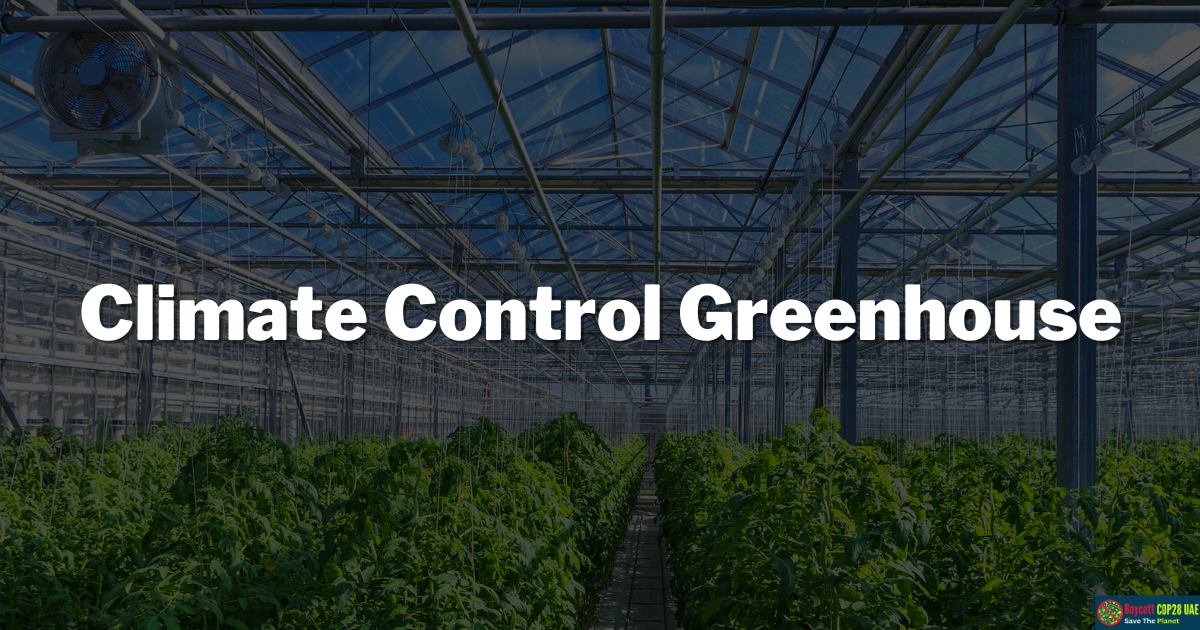A groundbreaking approach has emerged in agriculture, enabling us to cultivate bountiful yields of superior-quality produce throughout the year. Modern horticulture stands firmly upon this pioneering principle: growing crops in controlled environments. At the heart of this paradigm lies the paramount significance of climate control within protective spaces, particularly the climate-controlled greenhouse.
Cultivators relish the benefits of a harmonious fusion between nature’s radiant sunlight and a safeguard against harsh external elements within these innovative structures. Yet, to unlock the full potential of greenhouse cultivation, adept management of internal conditions becomes indispensable.
Enter the realm of empowered plants, where optimizing growing conditions and assuming absolute control over the cultivation process is paramount. This holistic approach, known as plant empowerment, takes center stage, tirelessly striving to amplify plant growth and fortify its vitality.
Enhancing climate control mechanisms within your greenhouse yields a multitude of advantages. Disease prevention takes precedence, shielding plants from debilitating infections. Simultaneously, plant growth receives an exhilarating boost, culminating in healthier and more vigorous crops. Quality, too, ascends to unprecedented heights, delighting both cultivators and consumers alike. Energy savings become attainable as the greenhouse optimizes its internal environment, nurturing crops with remarkable efficiency.
Embark on a journey where climate-controlled greenhouses reshape the fabric of crop cultivation, revolutionizing the industry and heralding an era of abundant harvests and thriving plants. Join the ranks of visionaries who embrace this paradigm shift as we unveil the limitless possibilities that lie within the grasp of those who master the art of climate control.
Climate Control Greenhouse: Temperature
A climate-controlled greenhouse nurtures plants in their ideal temperature zone. It is within this favorable range that plants thrive, engaging in efficient photosynthesis and other metabolic activities at an impressive pace. This fundamental principle forms the cornerstone of greenhouse climate management and has played a significant role in the inception of greenhouses.
While providing a protective cover is essential, it alone cannot guarantee the optimal temperatures plants require. Cultivators often employ air heating or cooling techniques to achieve the desired temperature range. The necessity for these measures varies depending on factors such as the local climate, geographical location, crop type, and more.
Different Ways Control Greenhouse Temperature
There exist numerous diverse methods for warming a plant house. Some are underground heating, surface heating, warmth conduits, and other techniques. Presently, countless cutting-edge greenhouses employ CHP frameworks (joined heat and power) to curtail energy costs and boost overall effectiveness.
An alternative solution often adopted is the utilization of thermal shields. These screens effectively capture warmth within the greenhouse, lessening the necessity for supplementary heating. They are an unremarkable addition to any plant house that frequently requires warming.
Plant houses can be found worldwide, spanning various climates. Consequently, certain instances call for cooling instead of heating. Popular cooling choices encompass air conditioning or HVAC, which can also provide heating, damp pads and fans.
Temperature and humidity are intrinsically interconnected, necessitating careful consideration of both factors when selecting heating or cooling methods.
How to Manage Greenhouse CO2 Level
The ideal climate control greenhouse is determined by three key factors: temperature, humidity, and radiation. By maintaining a balanced relationship between these elements, growers can achieve impressive results in plant growth.
But greenhouse operators can go one step further by supplementing the environment with additional CO2. This compound is crucial for photosynthesis and the production of plant compounds, which ultimately aid in growth.
However, adding CO2 to the air requires careful attention to balance. To fully benefit from the metabolic boost, plants may need more light. But increasing the lighting can also affect temperature and humidity, which must be closely monitored.
It’s important to remember that any changes to these four elements will impact one another. As a result, greenhouse growers must delicately balance and manage all climate parameters to achieve the best results.
Climate Control Greenhouse: Monitoring And Automating
The most effective approach to ensuring optimal conditions in the greenhouse at all times is to implement appropriate surveillance devices.
It is crucial to disperse multiple monitoring devices throughout to gain an accurate understanding of the greenhouse environment.
For instance, cultivators should utilize several thermometers positioned in various greenhouse areas to obtain an authentic temperature reading. The same principle applies to devices for monitoring humidity.
One of the primary challenges in greenhouses is the lack of consistent climate conditions. Certain areas may be arid, while others are excessively damp. This discrepancy can result in unequal plant growth, with some thriving more than others.
Even more concerning, non-uniform conditions foster the development of diseases, which can easily spread and infect neighboring plants, even if their local conditions are ideal.
Another method to ensure proper water balance is to track the amount of water the dehumidifier extracts. Cultivators can easily determine if they are removing enough moisture by comparing the extracted water with the irrigation process.
Once a grower establishes a reliable monitoring system that provides accurate information about greenhouse conditions, they can begin automating certain tasks. For example, DryGair dehumidifiers can be connected to the monitoring system and programmed to initiate dehumidification only when the relative humidity reaches a specific threshold. The same can be applied to heating or cooling, lighting, and even CO2 regulation.
Monitoring and automation are the key differentiators between a profitable greenhouse and an unsuccessful one. They can transform a low-yield greenhouse burdened with diseases and high production costs into an efficient facility that generates substantial, high-quality harvests.






